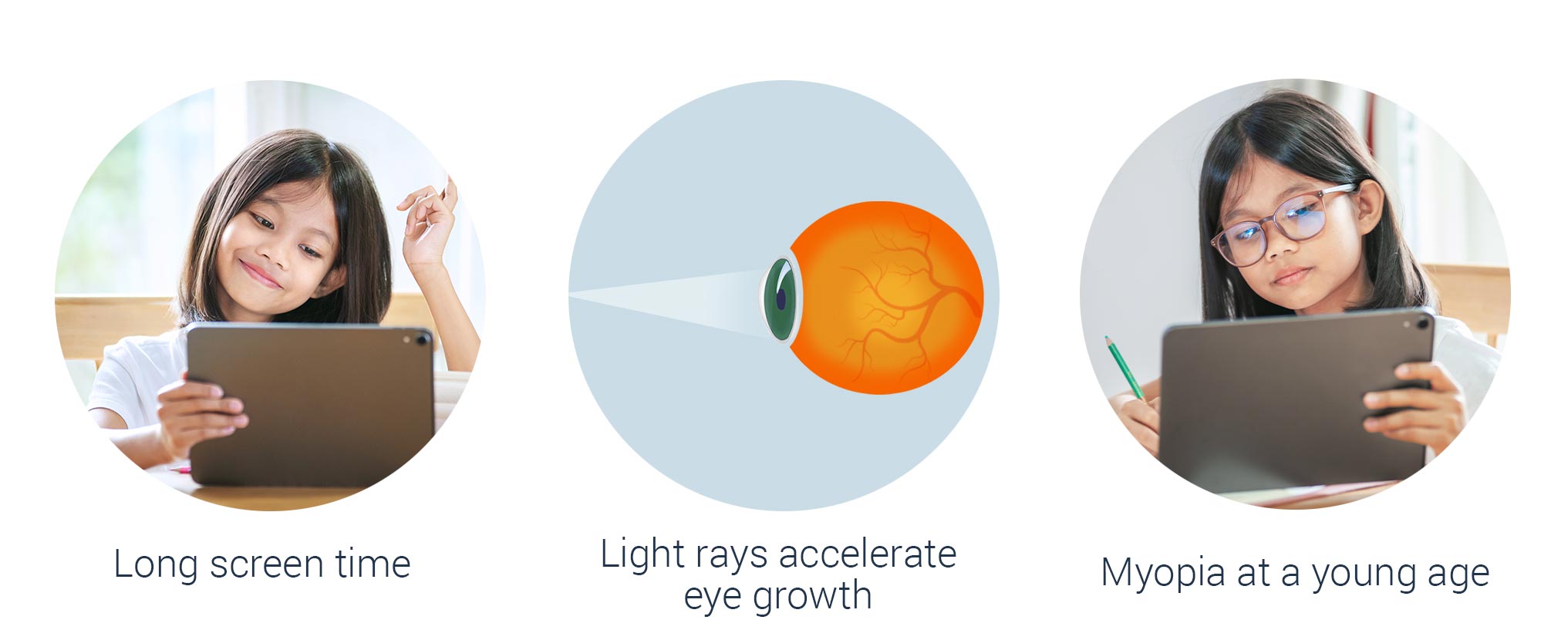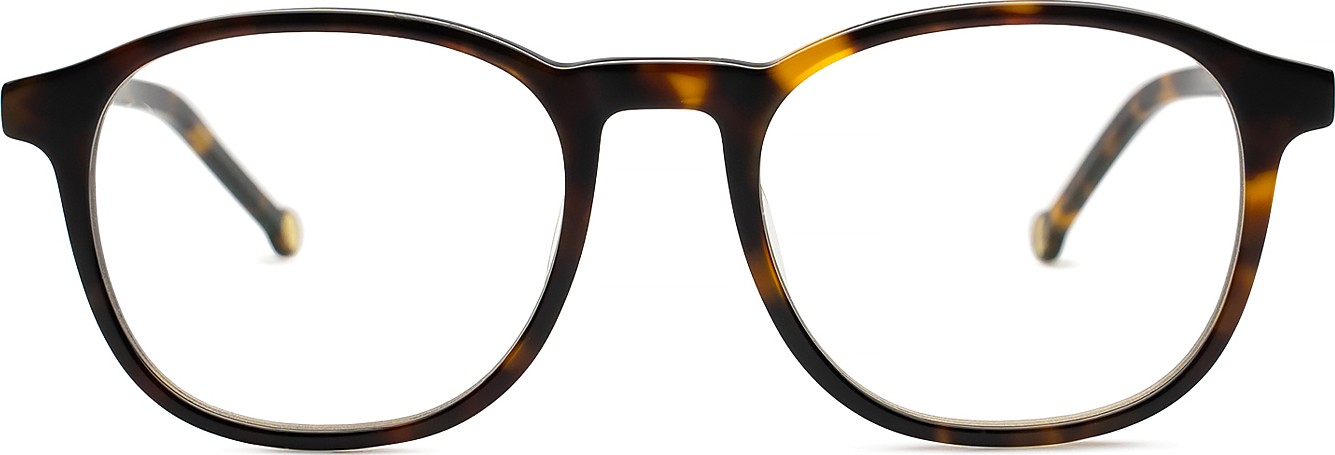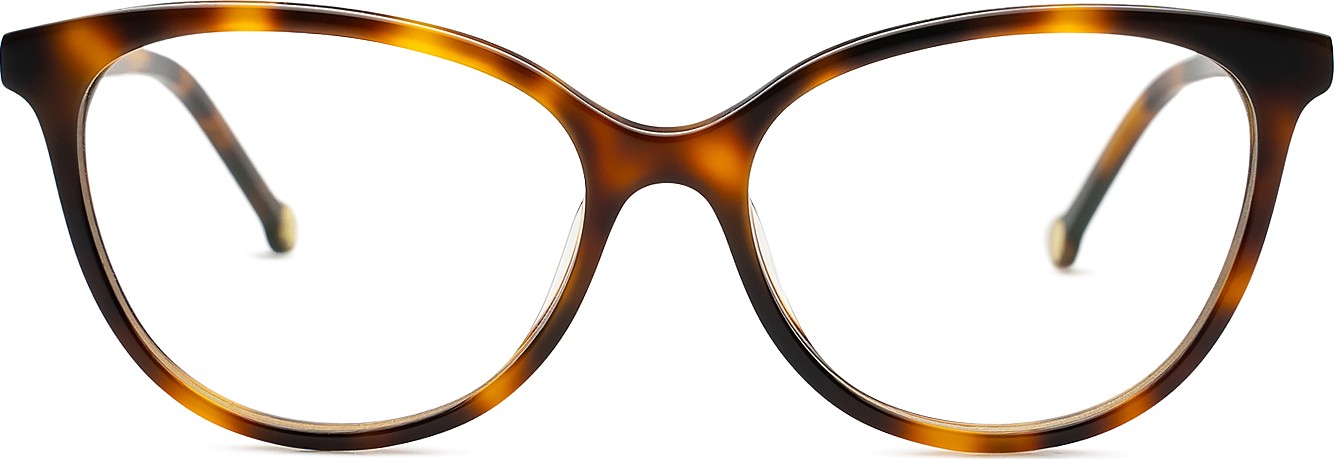How too much screen time can cause myopia in kids

The digital age and the current coronavirus pandemic are forcing us and our children to spend more time in front of the computer. This hurts our eyes more than previously thought.
This is because ophthalmologists say that long periods of time spent in front of the laptop, tablet or smartphone cause tired and dry eyes, headaches, blurred vision and even myopia.
Why this is so, and what you and your children can actively do about it, Lentiamo shows you in the following blog.
The consequences of online learning in times of COVID-19
Millions of children started online learning this past school year, many are still affected this year. And although schools have now reopened on a regular basis, teachers and parents must expect a sudden drop-out and a return to online learning and home schooling.
Even now, eye doctors can say that looking at laptop and tablet screens has an unpleasant effect on the eyes of children and young people. With more online learning in front of the computer, eye care professionals now even expect an increase in medical conditions.
The keyword is Asthenopia. This is a very common consequence of excessive use of screens and occurs in both children and adults. The symptoms are heavy eyelids, tired and red or watery eyes, discomfort, dizziness and headaches. Asthenopia is commonly known as „eye strain“ or Computer Vision Syndrom.
The Review of Ophthalmology summarised various studies in July 2020 and described the following observation:
In a study of school-age children between 11 and 17 years of age 18 percent experienced eye strain at the end of the day after studying at the computer. Asthenopia is caused by a variety of factors, including an imbalance of the eye muscles, accommodation deficits (poor eye focusing), uncorrected ametropia and incorrect lighting.
Can long screen times cause myopia in children?

Unfortunately, we have to answer this question with yes. The increase in the use of electronic media by children goes hand in hand with a worrying trend: the increase in myopia in children.
Many researchers agree that the light rays emitted by screens accelerate eye growth, making the eyes longer. This can cause short-sightedness at an early stage in life. Because this phenomenon has increased so dramatically in recent years, many scientists are talking about a new widespread disease: myopia.
A scientific article by Clinical Correlations on myopia associated with screen light demonstrated that prolonged use of a digital device and reading time can lead to temporary short-sighted shifts. In addition, constant staring at a nearby object and lack of natural light from outdoor activities have been associated with higher rates of early myopia.
Important for you to know: staying outdoors reduces this probability. It has been clearly documented that spending time outdoors minimizes the progression of myopia.
What to do about tired eyes and asthenopia?
Going out and spending time in nature is a good tip. Experts also recommend that children and adults take a break from the screen from time to time to protect themselves from digital visual stress and tired eyes. Follow these steps and notice how your eyes and those of your children feel less stressed over time.
- When your child is sitting in front of the computer, they should look at a different object off the screen every 20 minutes
- The object should be about 6 meters away
- During the break your child should blink a few times
- The break should last about 20 seconds
This exercise should soon bring relief to your eyes and those of your child. However, there are a few more things you need to pay attention to, such as the sitting position, the distance to the computer and the screen settings, as described further below.
Blue light glasses against tired eyes and bad sleep
What you and your children can as well do to protect yourselves from the rays of the screens is to wear blue light glasses. These block the short, blue waves that would otherwise hit our eyes and retina all day long. This can prevent headaches and tired eyes, and improve sleep, especially when used in the evening. Learn more about the selection of blue light glasses on Lentiamo.
Our blue light glasses recommendations:
Finally, ensure good ergonomics at your desk
Ergonomics and the optimisation of the workplace are just as important as resting your eyes. Here are a few recommendations for adopting better posture and habits:
- Make sure that you view the laptop from a distance of about 45 to 60 cm from your seat. Ideally the monitor should be placed at eye level. Tablets should be held at arm's length.
- To reduce glare, position all light sources behind your child's back and not behind the computer screen.
- Adjust the brightness and contrast on the screen to make it comfortable for your child.
- Do not use your devices outdoors or in brightly lit rooms; glare on the screen might cause eye strain.
- Avoid learning in dark rooms. If the pupil expands due to darkness, the brightness of the screen may cause discomfort.
- Our most important tip: put all devices down 30 to 60 minutes before going to bed. Blue light can disturb sleep. Switch on „night mode“ or a similar mode for your adolescent children to reduce the effects of blue light.
Sources:
1. Review of Opthhalmology, https://www.reviewofophthalmology.com/…e-of-covid19
2. Science Daily, https://www.sciencedaily.com/…06162718.htm
3. iovs, Investigative ophthamology and visual science, https://iovs.arvojournals.org/article.aspx?…
4. Clinical correlations, https://www.clinicalcorrelations.org/…gital-world/











Comments